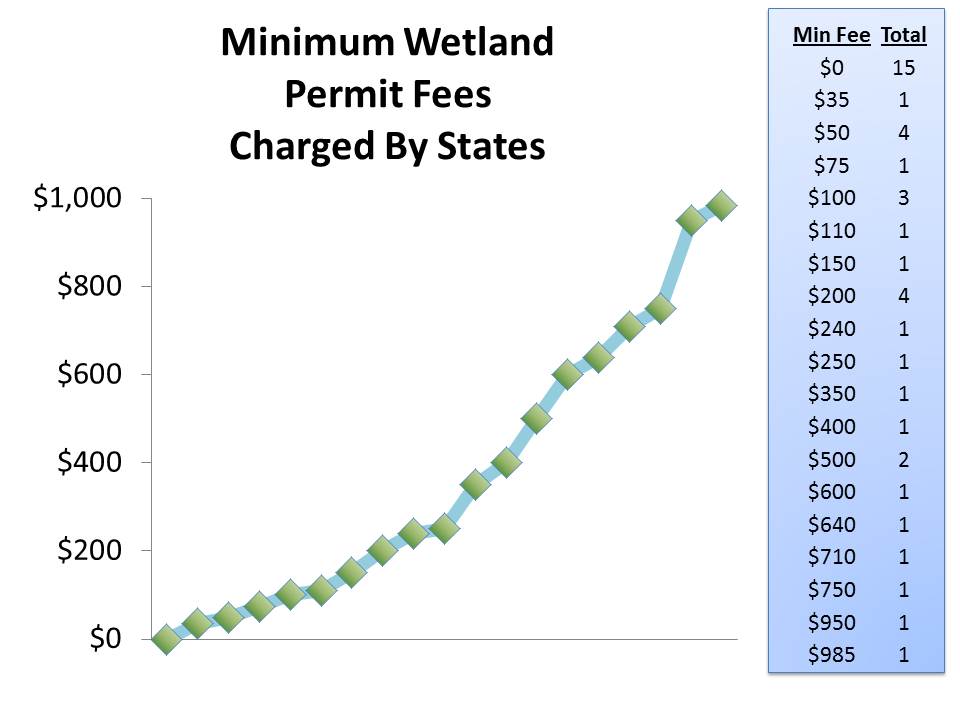Glenn Barnes is a senior project director at the Environmental Finance Center at the University of North Carolina. Glenn is the project manager of the Sustainable Finance for Wetland Programs project funded by the U.S. Environmental Protection Agency.
In the world of environmental finance, questions can seem a lot simpler than they actually are. For the past several years, the Environmental Finance Center has helped states and tribes think about how to fund their wetland programs in more financially sustainable ways. At our finance workshops, we discussed how states and tribes across the country pay for the work they do across the four core elements of effective wetland programs: regulation, monitoring and assessment, voluntary restoration and protection, and water quality standards for wetlands.
One question often came up in these workshops: “How much do other programs charge for wetland regulatory permits?” This simple question proved to have a far more complicated answer. Without some caution, it is easy to end up comparing apples to oranges.
The simple way to answer the question is in pure dollar terms. This state charges $250 for a permit. That tribe charges $75. I suspect this was the answer our workshop participants were looking for. But through our interviews with states and tribes, it became quickly clear that the context behind those numbers was equally important to the story.
Permit fees are just one tool states and tribes use to cover the cost of their regulatory activities, along with general fund appropriations, federal grants, regulatory penalties, and other sources. The degree to which the permit fees covered the full cost of the permitting activity varied from program to program if permit fees were charged at all. So, a $100 fee in one state may have only covered 10 percent of their actual permitting costs, while a $750 fee in another state covered 50 percent of their costs. At least one state had a constitutional mandate that fees could only cover the administrative costs of processing the permit and not the associated field work necessary to approve it.
Another big discrepancy is where the permit fee money goes. For example, in states like Maryland and North Carolina, the permit fee revenue goes directly to the wetland program and is needed to cover the salaries of wetland regulatory staff. In other programs, such as in New York, the permit fee revenue is directed to the state’s general fund, and the wetland program gets an annual appropriation for its regulatory activities that is not tied to the volume of permits issued.
Other discrepancies exist in the basis of the permit (fixed rate, based on project size/cost, based on time needed to process the permit), how often the fee is revised, and what entities are exempt from paying permit fees.
All of the information on how states and tribes pay for wetland regulatory activities is collected on our project website, including spreadsheets of rates and characteristics, other funding sources, and interactive maps.
But what about that simple question? How much do wetland programs charge for permits? For the states and tribes that charge wetland permit fees, the minimum cost ranged from $35 to $985 per permit, as seen in the chart below. Just remember this is only the beginning of the answer.





Leave a Reply